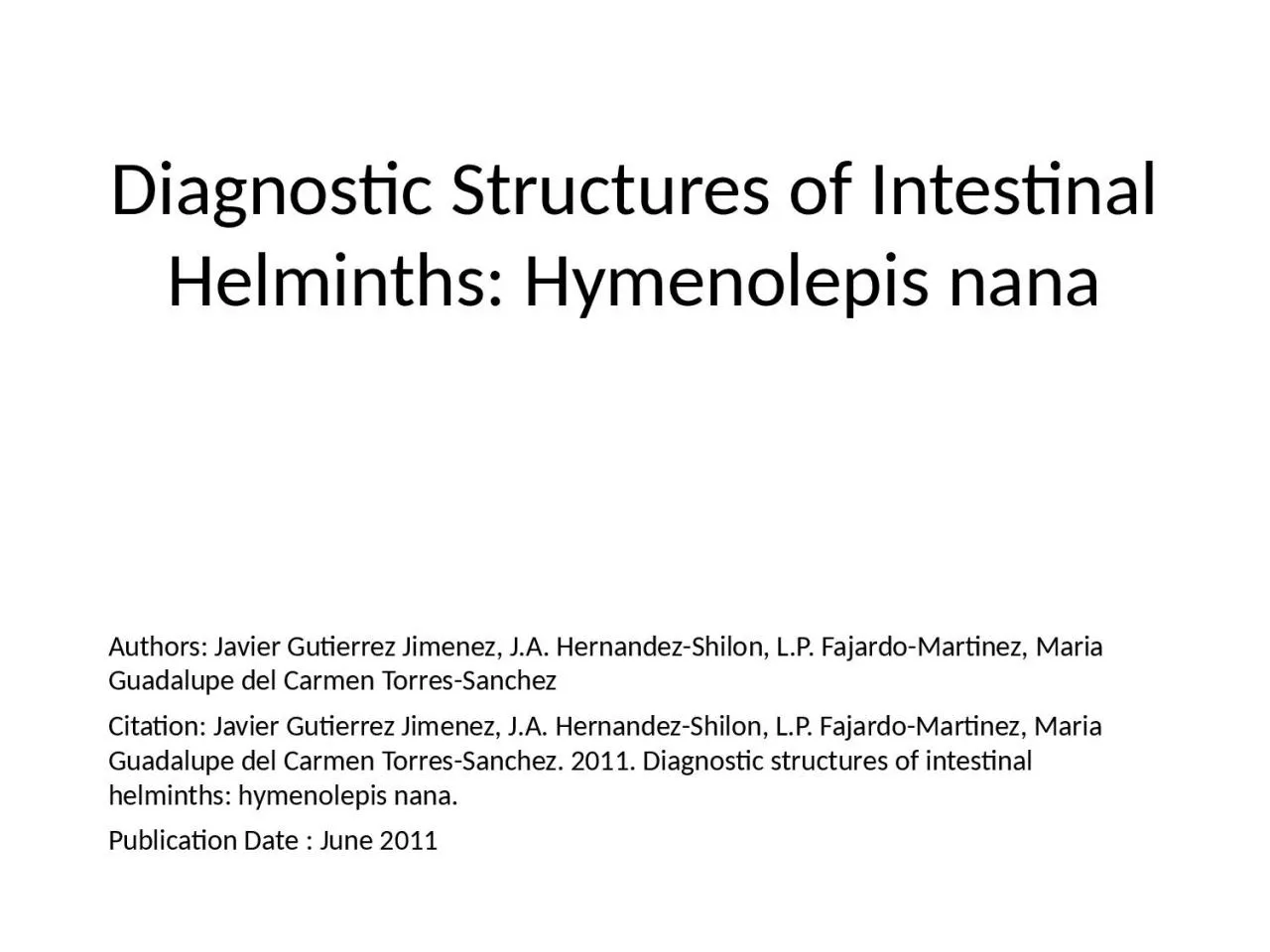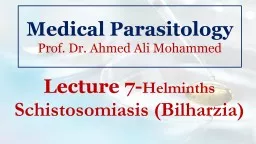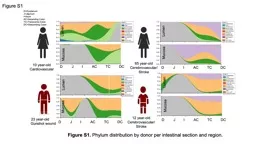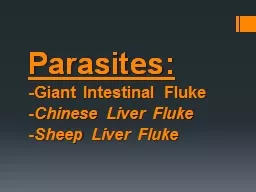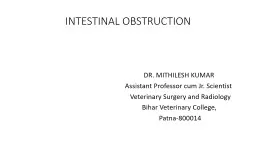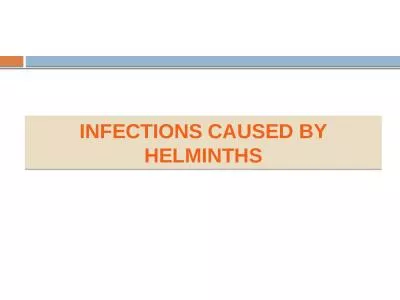PPT-Diagnostic Structures of Intestinal Helminths:
Author : lily | Published Date : 2023-11-17
Hymenolepis nana Authors Javier Gutierrez Jimenez JA Hernandez Shilon LP FajardoMartinez Maria Guadalupe del Carmen TorresSanchez Citation Javier Gutierrez Jimenez
Presentation Embed Code
Download Presentation
Download Presentation The PPT/PDF document "Diagnostic Structures of Intestinal Helm..." is the property of its rightful owner. Permission is granted to download and print the materials on this website for personal, non-commercial use only, and to display it on your personal computer provided you do not modify the materials and that you retain all copyright notices contained in the materials. By downloading content from our website, you accept the terms of this agreement.
Diagnostic Structures of Intestinal Helminths:: Transcript
Download Rules Of Document
"Diagnostic Structures of Intestinal Helminths:"The content belongs to its owner. You may download and print it for personal use, without modification, and keep all copyright notices. By downloading, you agree to these terms.
Related Documents

